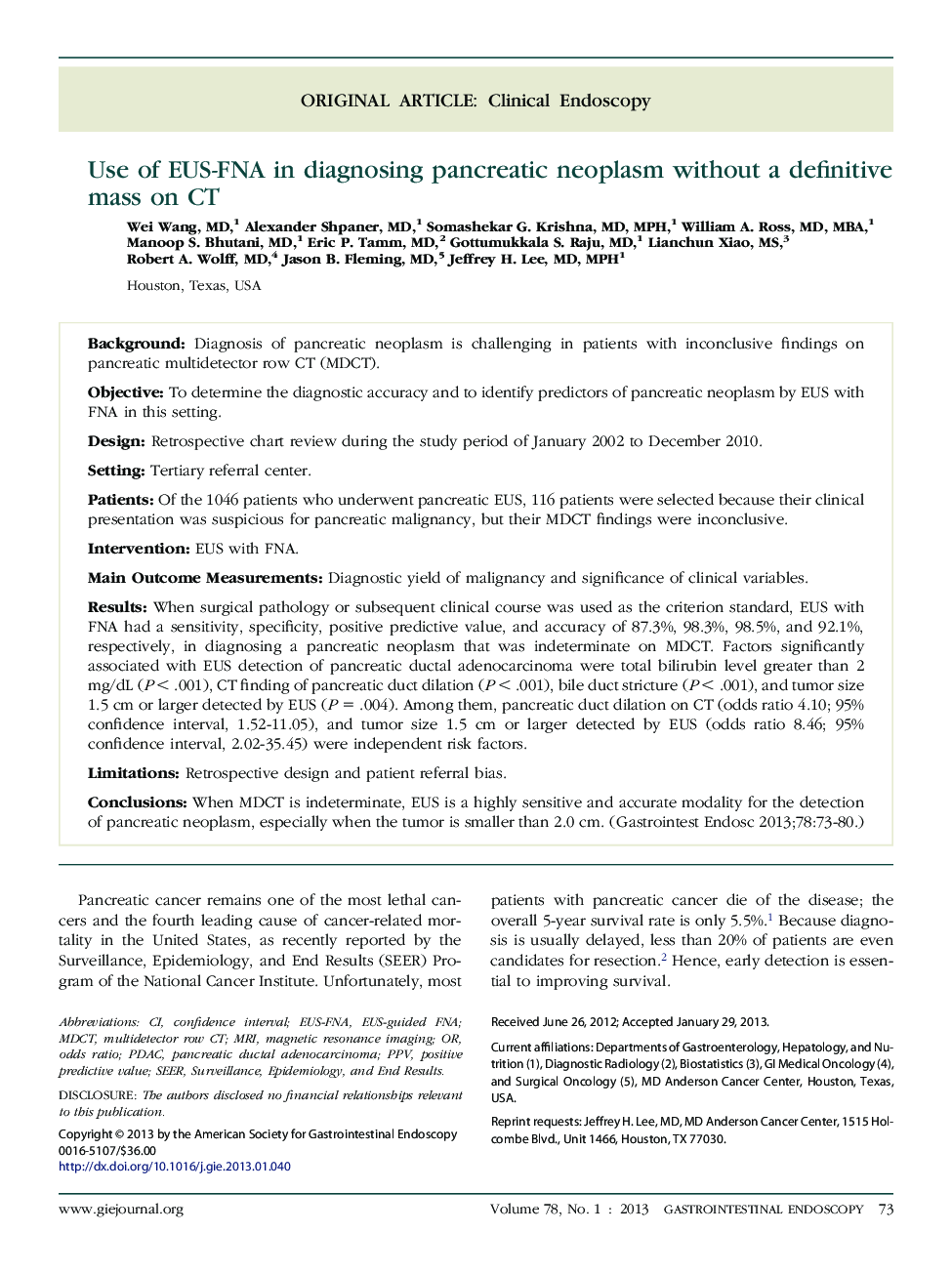| Article ID | Journal | Published Year | Pages | File Type |
|---|---|---|---|---|
| 3304014 | Gastrointestinal Endoscopy | 2013 | 8 Pages |
BackgroundDiagnosis of pancreatic neoplasm is challenging in patients with inconclusive findings on pancreatic multidetector row CT (MDCT).ObjectiveTo determine the diagnostic accuracy and to identify predictors of pancreatic neoplasm by EUS with FNA in this setting.DesignRetrospective chart review during the study period of January 2002 to December 2010.SettingTertiary referral center.PatientsOf the 1046 patients who underwent pancreatic EUS, 116 patients were selected because their clinical presentation was suspicious for pancreatic malignancy, but their MDCT findings were inconclusive.InterventionEUS with FNA.Main Outcome MeasurementsDiagnostic yield of malignancy and significance of clinical variables.ResultsWhen surgical pathology or subsequent clinical course was used as the criterion standard, EUS with FNA had a sensitivity, specificity, positive predictive value, and accuracy of 87.3%, 98.3%, 98.5%, and 92.1%, respectively, in diagnosing a pancreatic neoplasm that was indeterminate on MDCT. Factors significantly associated with EUS detection of pancreatic ductal adenocarcinoma were total bilirubin level greater than 2 mg/dL (P < .001), CT finding of pancreatic duct dilation (P < .001), bile duct stricture (P < .001), and tumor size 1.5 cm or larger detected by EUS (P = .004). Among them, pancreatic duct dilation on CT (odds ratio 4.10; 95% confidence interval, 1.52-11.05), and tumor size 1.5 cm or larger detected by EUS (odds ratio 8.46; 95% confidence interval, 2.02-35.45) were independent risk factors.LimitationsRetrospective design and patient referral bias.ConclusionsWhen MDCT is indeterminate, EUS is a highly sensitive and accurate modality for the detection of pancreatic neoplasm, especially when the tumor is smaller than 2.0 cm.
